What is the best way to feed geraniums?

Did you know that geranium and pelargonium are completely different flowers? Many people in the street believe that both names refer to one beautiful flower. And in vain. Both geranium and pelargonium belong to the Geraniev family, and this is where their similarities end. There are differences in the structure of flowers. For example, pelargonium forms large inflorescences, geraniums are rarely collected in inflorescences. There are other differences well known only to botanists.
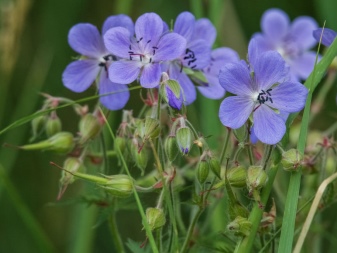
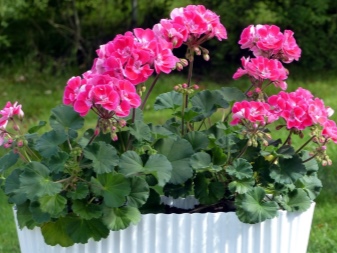
Peculiarities
The main difference between plants is in places of natural growth. Pelargonium in Russia is a foreigner. She came to us from a place where there is no winter. A heat-loving flower in our country has taken root on the windowsills. In the summer, it can be planted in the garden on a flower bed. But with the approach of the autumn weather will have to be returned to the living quarters.
Prolonged exposure to + 10 C will lead to weakening and wilting of pelargonium.
Geranium is a completely different matter. By its nature, it belongs to street plants. In nature, geranium grows throughout the European part of our homeland, with the exception of the northern regions. Cultivated garden plants do not require shelter for the winter, as they are frost-resistant.
In our article, we will focus on geraniums, but not on the street, but on the one that pleases the eye all year round. The plant feels great in pots: it blooms for a long period. A pleasant delicate aroma and lush greenery create a unique atmosphere of warmth and comfort in the apartments.
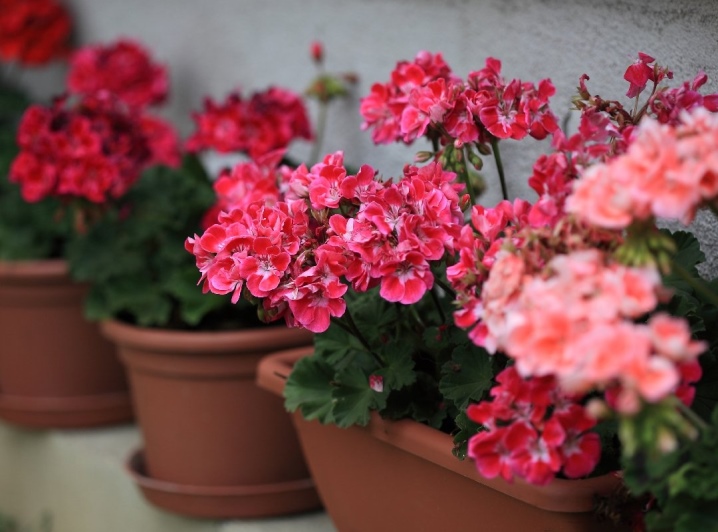
How to care?
Despite the fact that the plant is unpretentious, it still needs some care. Those who only intend to plant a beautiful flower in the house should know the following.
- Frequent watering is contraindicated. You need to moisten the soil as it dries up: in the summer, more often - a couple of times a week, in the winter less often - once. Waterlogging will lead to decay of the root system. A short drought won't do any harm.
- More frequent feeding is required during the flowering period - in spring and summer.... Without the need to "overfeed" the flower is unnecessary.
- For free air access to the roots you should periodically loosen the soil in pots.
- Once every 2-3 years, the flower is transplanted into a larger pot. Otherwise, the roots will become cramped, and the plant will not receive adequate nutrition.
- Produced in spring pruning.
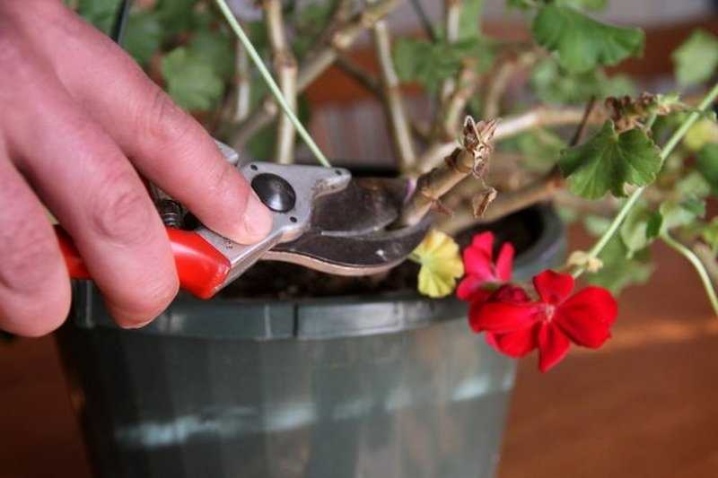
Features of seasonal feeding
There are some peculiarities in feeding. So, nitrogen-containing substances are required to be applied exclusively after pruning the plants. An excess of nutrients will lead to yellow foliage and even complete wilting of the flower. Therefore, when you decide to feed geraniums, it is important to observe the amount of nutrients and the timeliness of their introduction.
Subject to simple rules, your bushes will bloom well for several months.
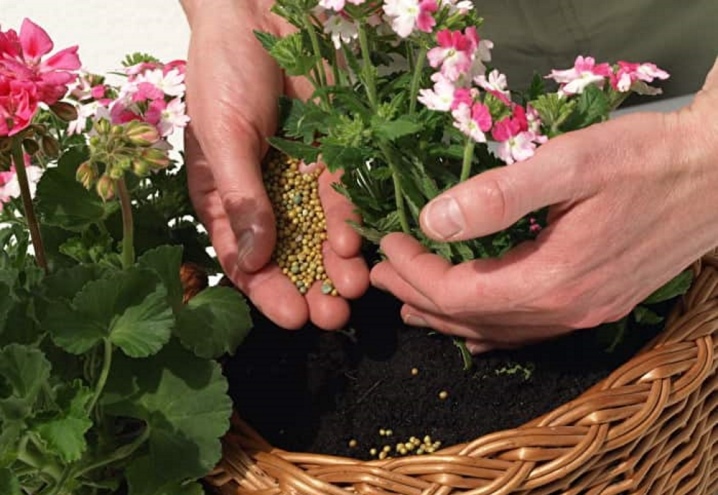
Spring
Even those flowers that are indoors all year round rest in the cold season. After winter, when the sun shines brighter, and the length of daylight hours increases, all nature wakes up. Geranium is no exception. Now is the time to help the plant replenish its supply of nutrients and quickly gain strength. For feeding geraniums need to be watered with mineral mixtures. You can buy them at the flower shop. Mixtures are preferable to use, since they contain a complete set of all the necessary elements.Alternatively, you can use an aqueous solution of iodine. The frequency of fertilization is 2 weeks.
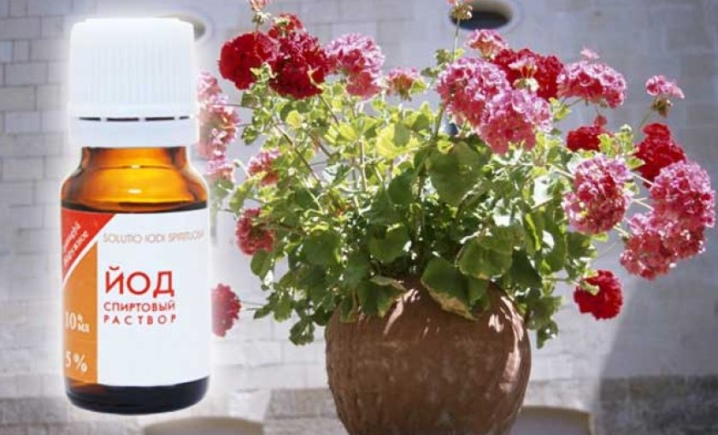
Summer
Summer is a period of intense flowering. The plant requires a lot of energy to form flowers. During this period, you need to maintain the frequency of feeding: once every 14 days. It is not necessary to buy fertilizers, they can be prepared at home from substances and foods that are used every day. For abundant flowering in early summer, geraniums require phosphorus, potassium and nitrogen. Later, the nitrogen content is reduced.
If you want your geranium to bloom well, give it iodine solution after the next watering.

Autumn
With the onset of cool, cloudy autumn days, the flowering process begins to decline. Geraniums are still curling, but they no longer require as many nutrients as they do in spring and summer. During this period, feeding is reduced to 1 time per month.
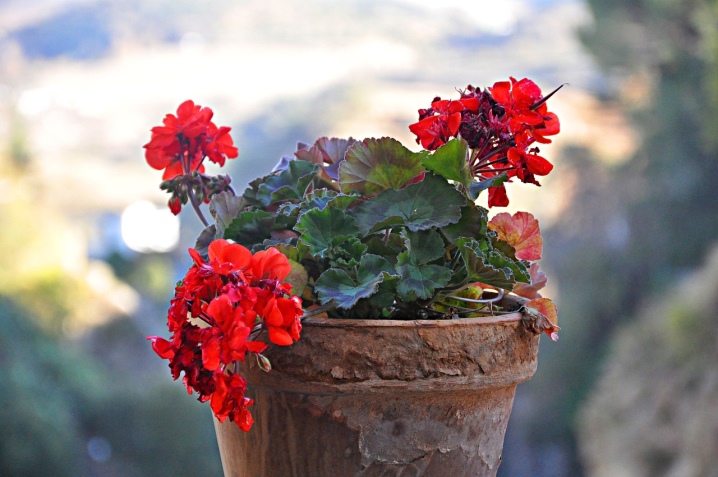
Winter
Indoor plants can also be fertilized in winter. One feeding carried out in February will be sufficient. The amount of useful elements is halved in winter. The flower will overwinter well and will be ready for the next development cycle.
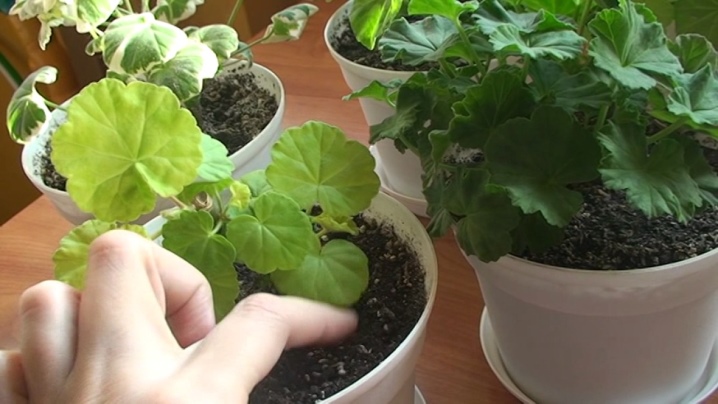
The best remedies
Fertilizers for any flower crop can be found in specialized stores. And yet, indoor plant lovers often prefer proven folk remedies to purchased chemicals. It has long been known that yeast is used to grow geraniums. Getting into the soil mixture, yeast fungi give an impetus to the increased formation of potassium and nitrogen. These elements are required for active growth.
Yeast feeding is especially appropriate for planting and propagation by cuttings. The fertilizer has a gentle effect on the sprouts, does not harm either the stems or delicate roots.
Feeding from yeast is prepared as follows: a 20-gram sachet of dry substance is poured into a container with 1 liter of warm water. The contents are mixed and sent to a warm place for infusion for a couple of hours. After the allotted time for infusion, another 5 liters of water are added to the liquid and mixed. The fertilizer is ready for use. Top dressing is performed no more than 3 times. The frequency is a week.
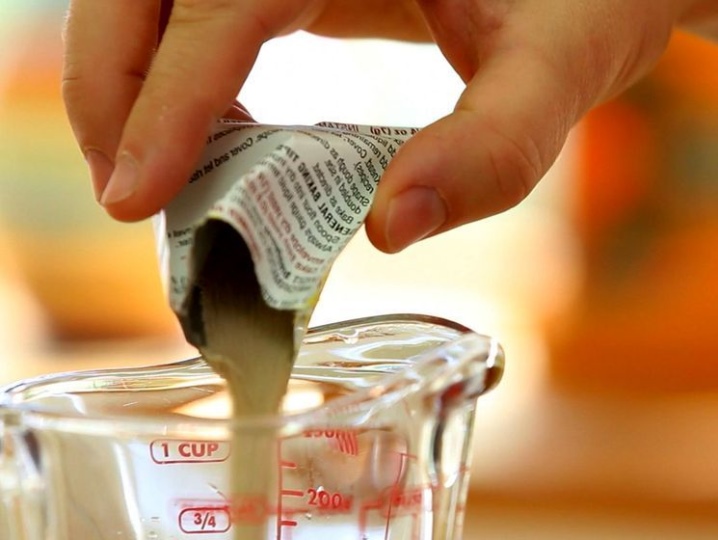
There is another option for yeast feeding. In it, the weight of the main element is halved - up to 10 g. The "vacant space" is occupied by a tablespoon of granulated sugar. Otherwise, the preparation process is repeated. It is important that the fertilizer must be fresh every time. You cannot store it. 3% hydrogen peroxide helps with the yellowness of the foliage. Top dressing is done by spraying and watering. To prepare the solution, a pharmaceutical agent in the amount of 2 tablespoons is dissolved in a liter of water.
Dairy feeding is a wonderful prophylactic agent. The likelihood of flower diseases is reduced if watering with water is alternated with watering with diluted milk. Fertilization requires 100 ml of milk and 1 liter of water. In the pharmacy, you can buy another very useful tool for indoor flowers. This is boric acid. Experienced flower growers have geraniums that bloom profusely thanks to special feeding. Half a gram of powder dissolved in a liter of water works wonders by doubling kidney formation.
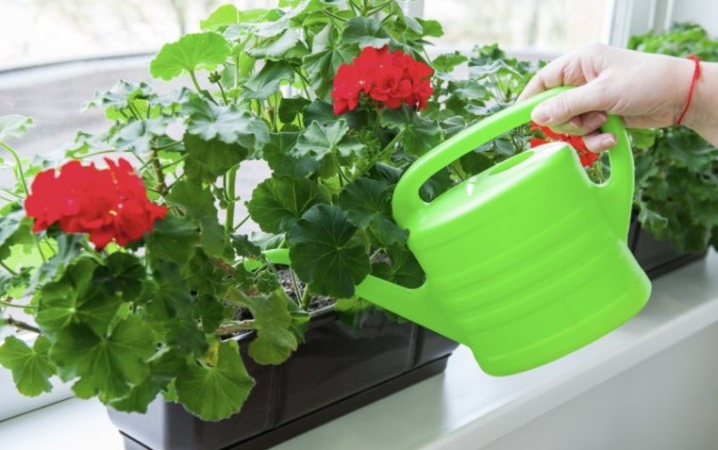
Banana lovers don't need to buy potted plant fertilizer. The peel of heat-loving fruits contains a lot of useful elements: potassium, calcium and nitrogen, magnesium and phosphorus. All that is required is to grind the peel and bury it in the ground. After a couple of weeks, the skins will decompose, providing the plant with good nutrition.
Before you bury the fertilizer in the ground, it should be thoroughly rinsed. Bananas are brought to Russia from afar, so that they are preserved, the sellers subject the products to chemical processing. Only after removing the harmful surface film can the peel be used. For the lush foliage of geraniums, banana peels work better than other products.
Succinic acid plays an important role in the life of indoor plants. With its help, you can regulate the development of the flower, protect it from diseases and the accumulation of toxins. And it also helps the plant to survive the most unfavorable times. Succinic acid improves the condition of the soil, helps the process of foliage photosynthesis. The benefits for geraniums will be obvious if you use amber dressing in conjunction with other fertilizers.
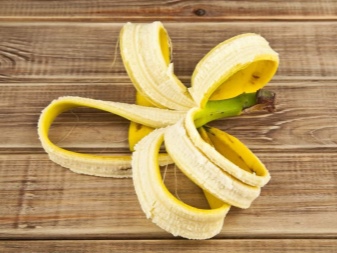

Do not dwell only on fertilizers. Remember that the flower needs timely pruning and pinching, then its power will not be wasted on excessive growth, in which rare ovaries are formed.
General recommendations
Geranium propagation
Of course, you can purchase an adult flower and put it on the windowsill. But not everyone does this, so you should familiarize yourself with the rules of reproduction. The easiest way is grafting. Twigs no more than 6-7 cm long are separated from an adult plant. The stalk is placed in a container with water. Roots begin to sprout very quickly. When the root system is formed, the twig is transplanted into the ground.
A more difficult way is growing from seeds. In order to quickly get a healthy seedling, the seeds are placed in the ground at a shallow depth. The planting is not watered, but sprayed and covered with polyethylene. The container should be in a dark, warm place. Seedlings usually appear after 7-10 days. After the sprouts appear, the polyethylene is removed, the container is brought out into the light. Flowers are planted in separate pots when 4 sheets appear. After picking, you can start feeding the plant. Planting is carried out in winter so that geraniums bloom in summer.
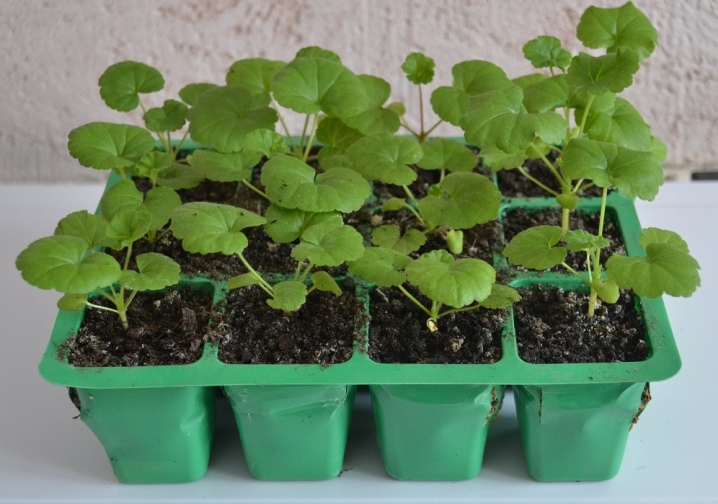
How to eliminate yellow leaves
Experienced flower growers are well versed in the state of their favorite plants. They determine the causes by the state of the foliage. For example, the formation of a yellow border on the leaves indicates a lack of water. In this case, you need to thoroughly loosen the soil in the pot and make a one-time abundant watering. In the future, you should adhere to the frequency of introducing settled water under the root:
- in hot weather - 2-3 times a week;
- in winter - once every 7 days.
Yellowness and wilting appear with excess moisture. In order for the leaves not to turn yellow, geraniums must receive adequate timely nutrition. The flower pot is chosen medium in size with the obligatory drain holes in the bottom. So excess water will not stagnate, and the roots will not be damaged by rot.
Greens begin to fade when there is a lack of lighting. This does not mean that the flower should be exposed to the sun. He just wants space. There should be a decent distance between adjacent pots. When the flowers are spacious, they will fluff up, and the leaves will acquire their natural color.
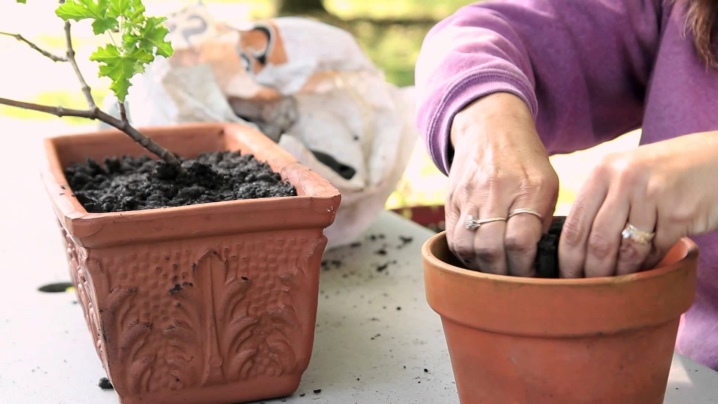
What to do with a flower disease?
Geranium is ill infrequently, but if the disease has taken possession of the plant, it is necessary to determine the nature of the disease. They are fungal and viral. Fungicides help from leaf rust and black leg, as well as from rot. If the plant is attacked by insects, for example, aphids or caterpillars, various mites or a whitefly, special means will be salvation.
As soon as the first signs of the disease appear, you need to inspect the flower. Particular attention should be paid to the back of the foliage. Often, the presence of insect pests can be detected only by the remains of their vital activity. Timely spraying with disinfectants will help the geranium to regain strength.
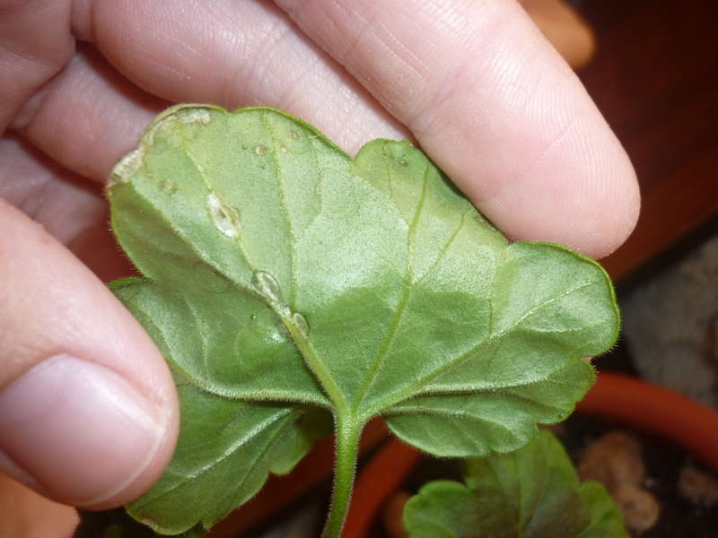
After an illness, the flower will need more attention. It is necessary to remove all dry and damaged leaves, pour a nutrient solution under the root.
Beneficial features
Lush geranium perfectly cleans the air in living quarters from pathogenic microbes. The delicate aroma has a positive effect on the nervous system, relieves stress and depression. If you attach a fresh leaf to a scratch or abscess, healing will occur much faster. Our ancestors used a decoction of the flower to treat gastrointestinal diseases.
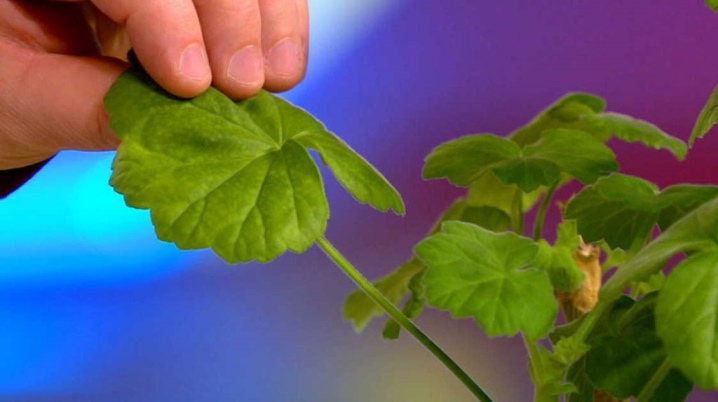
For information on how to care for geraniums to bloom all year round, see the next video.







































































































The comment was sent successfully.